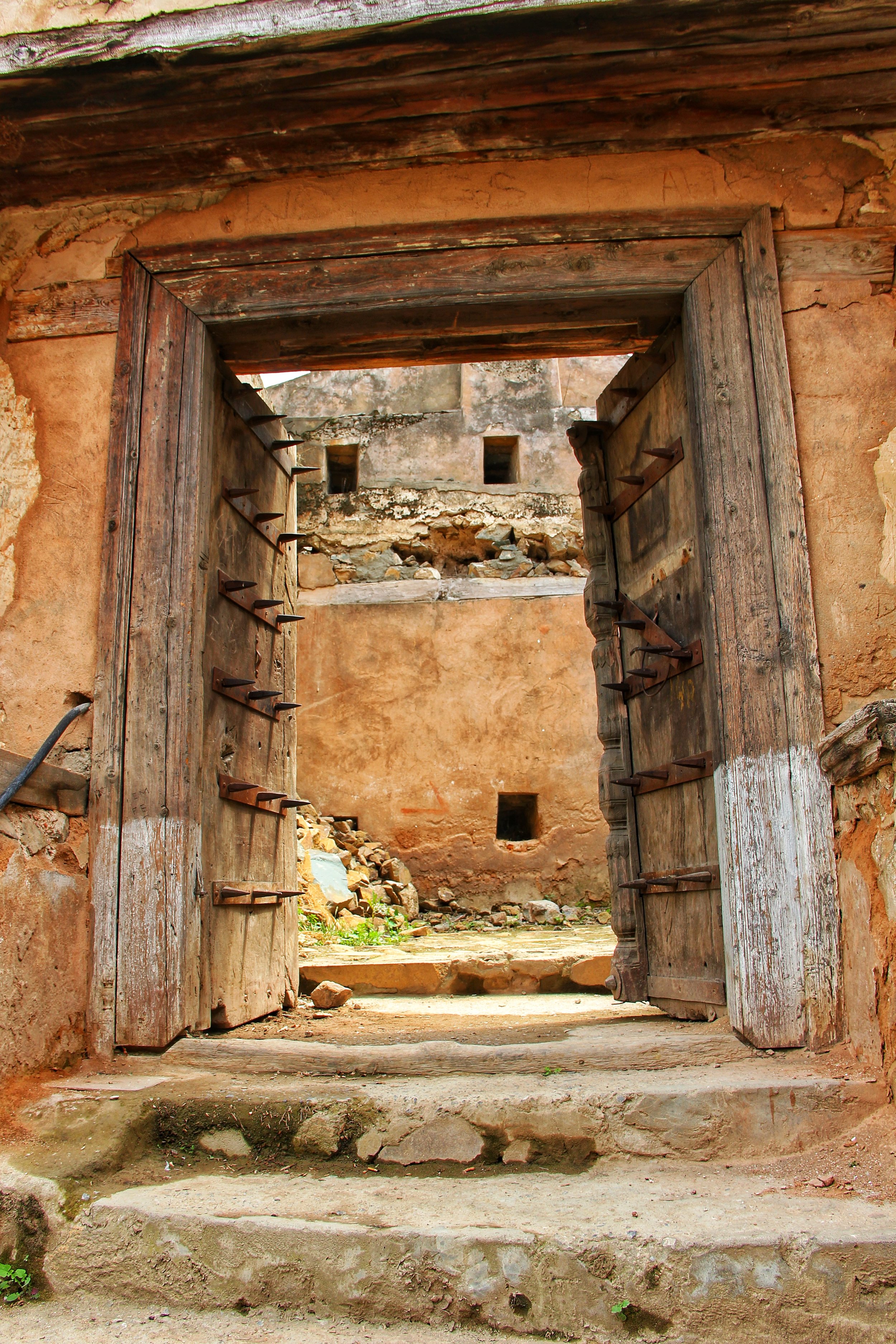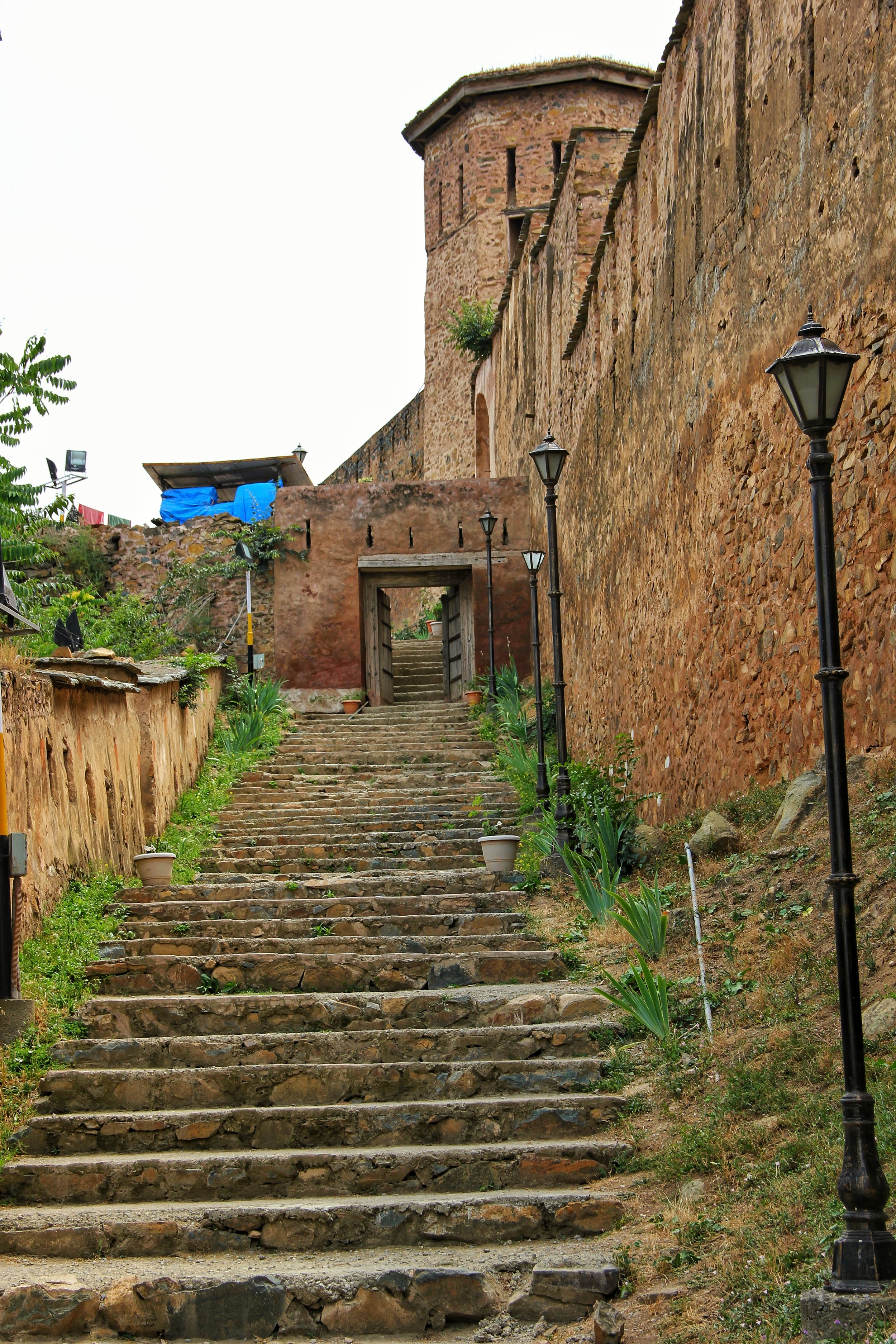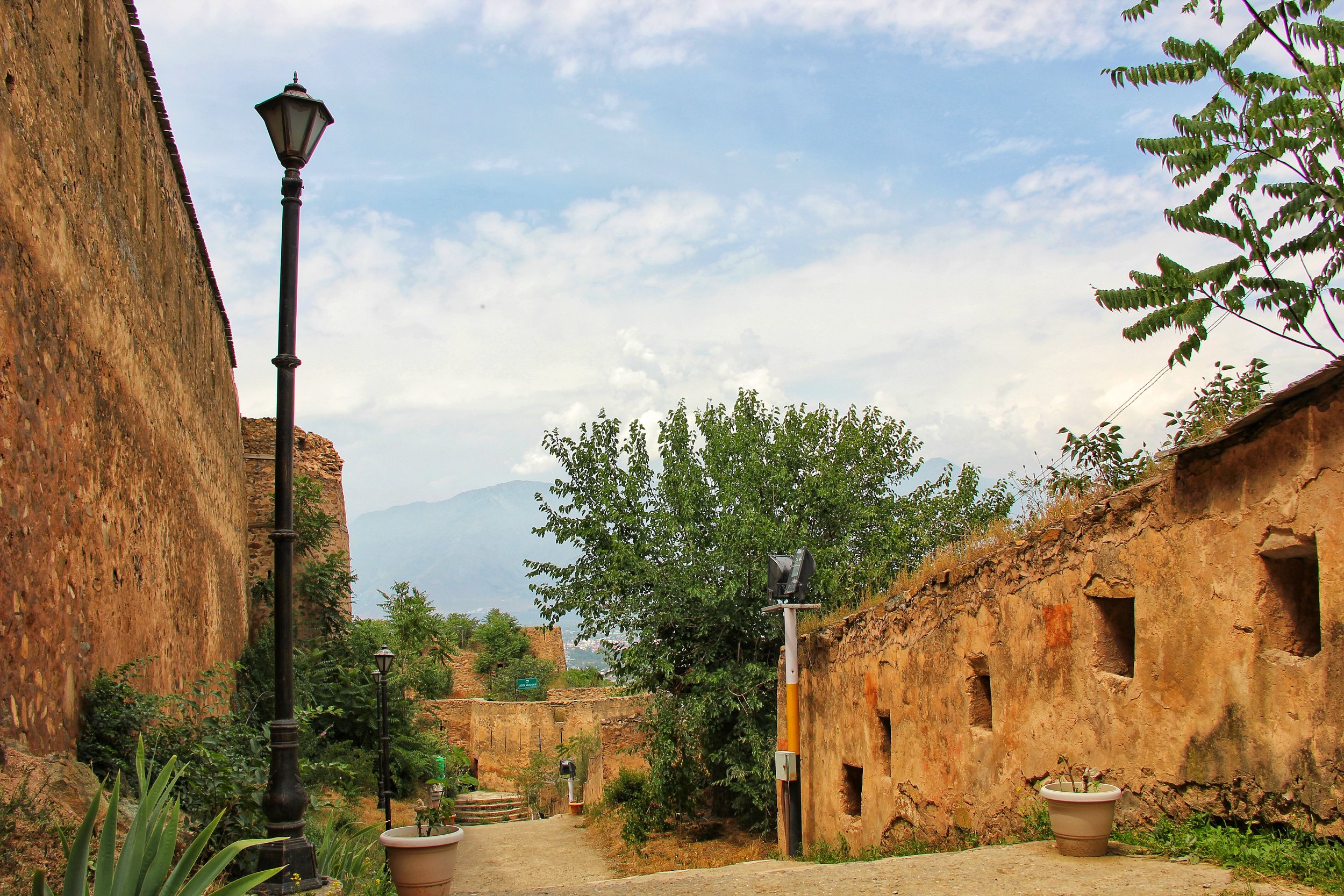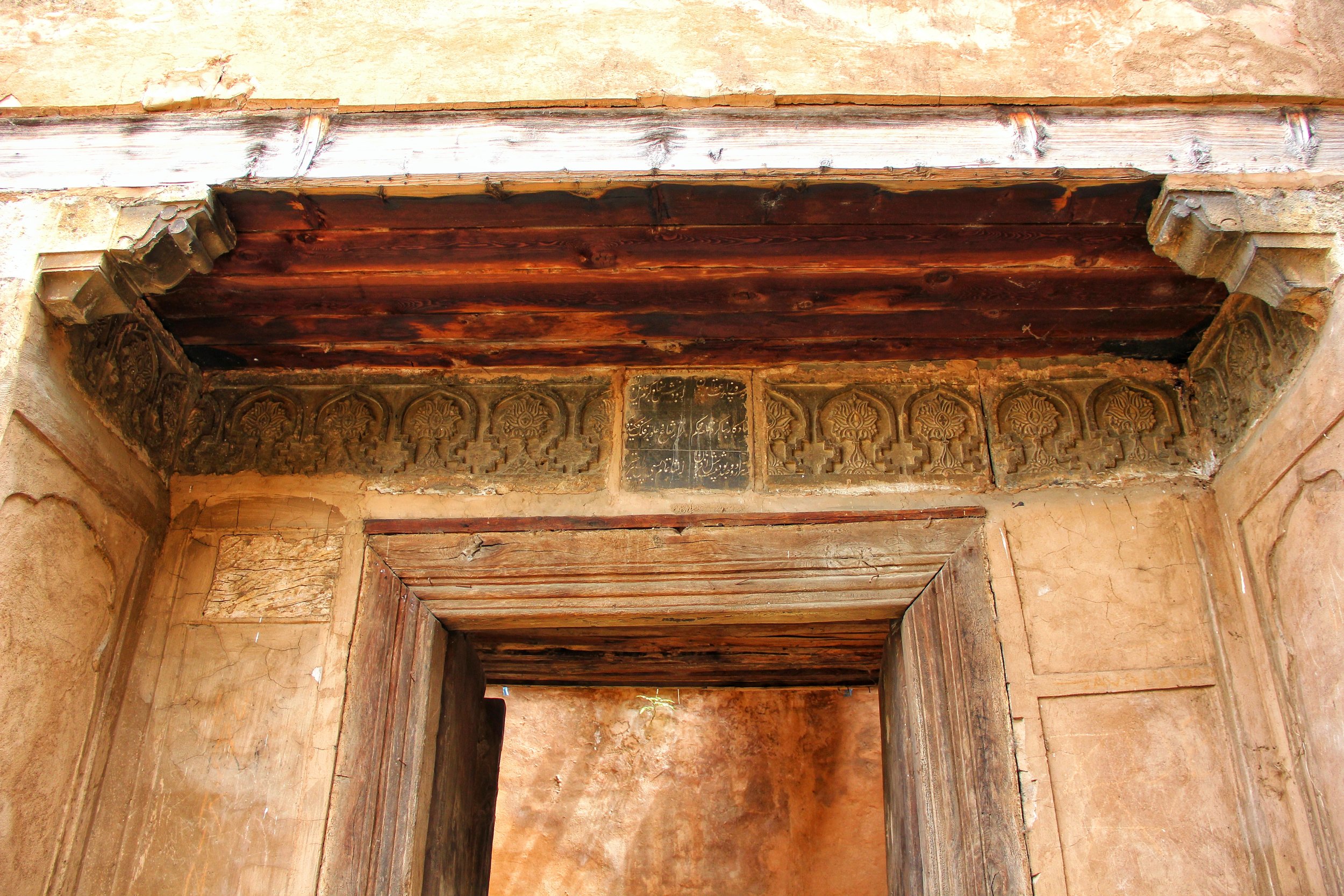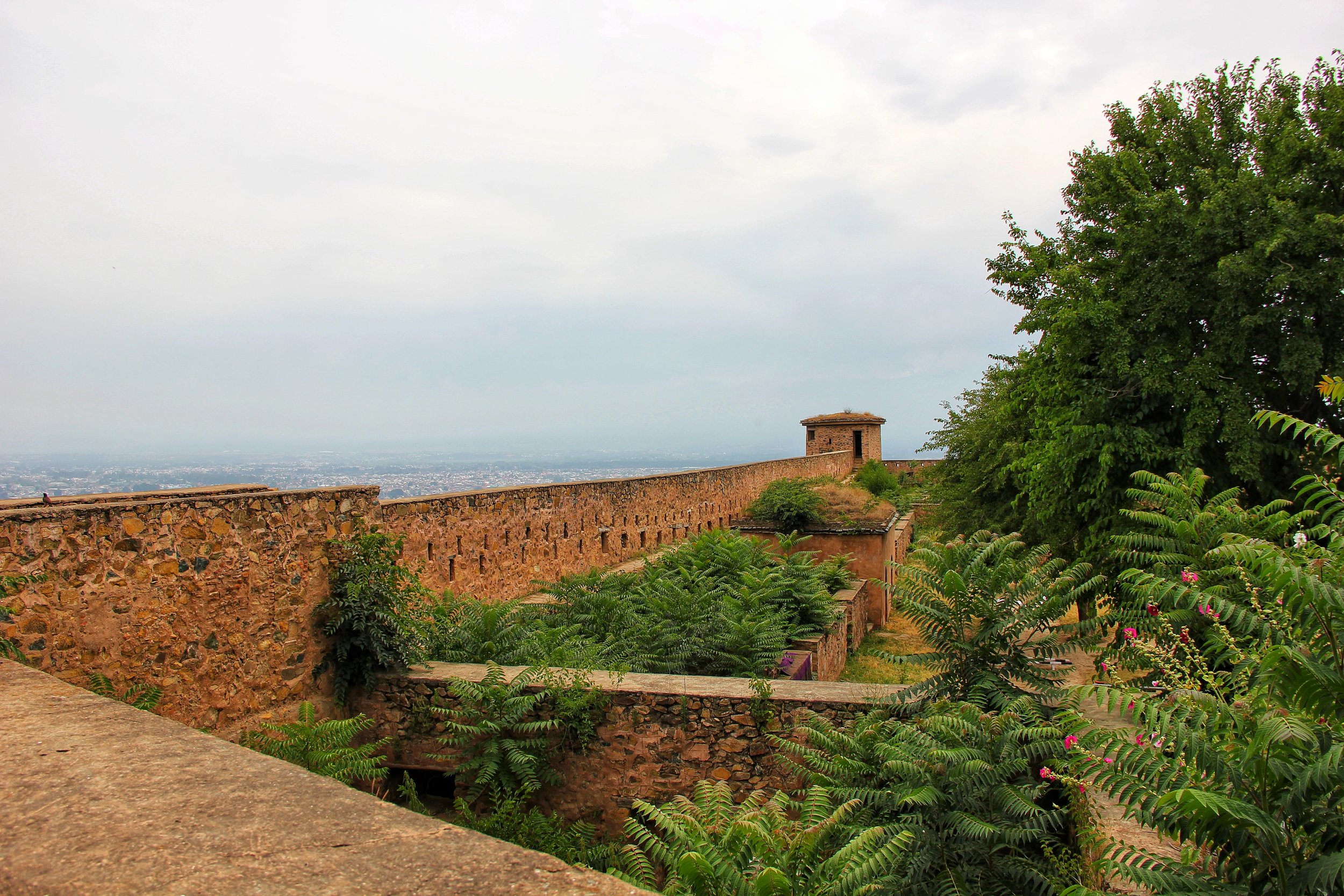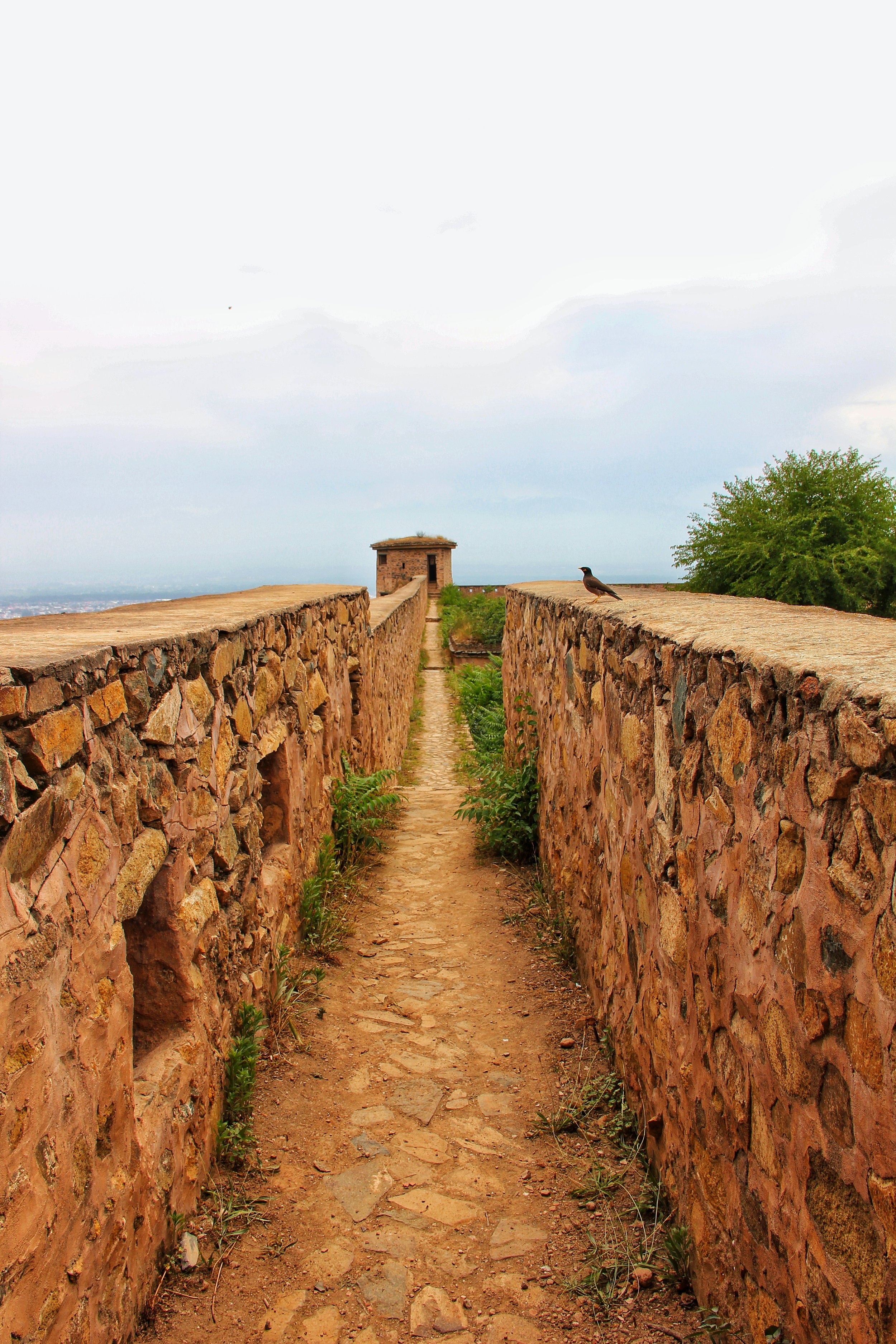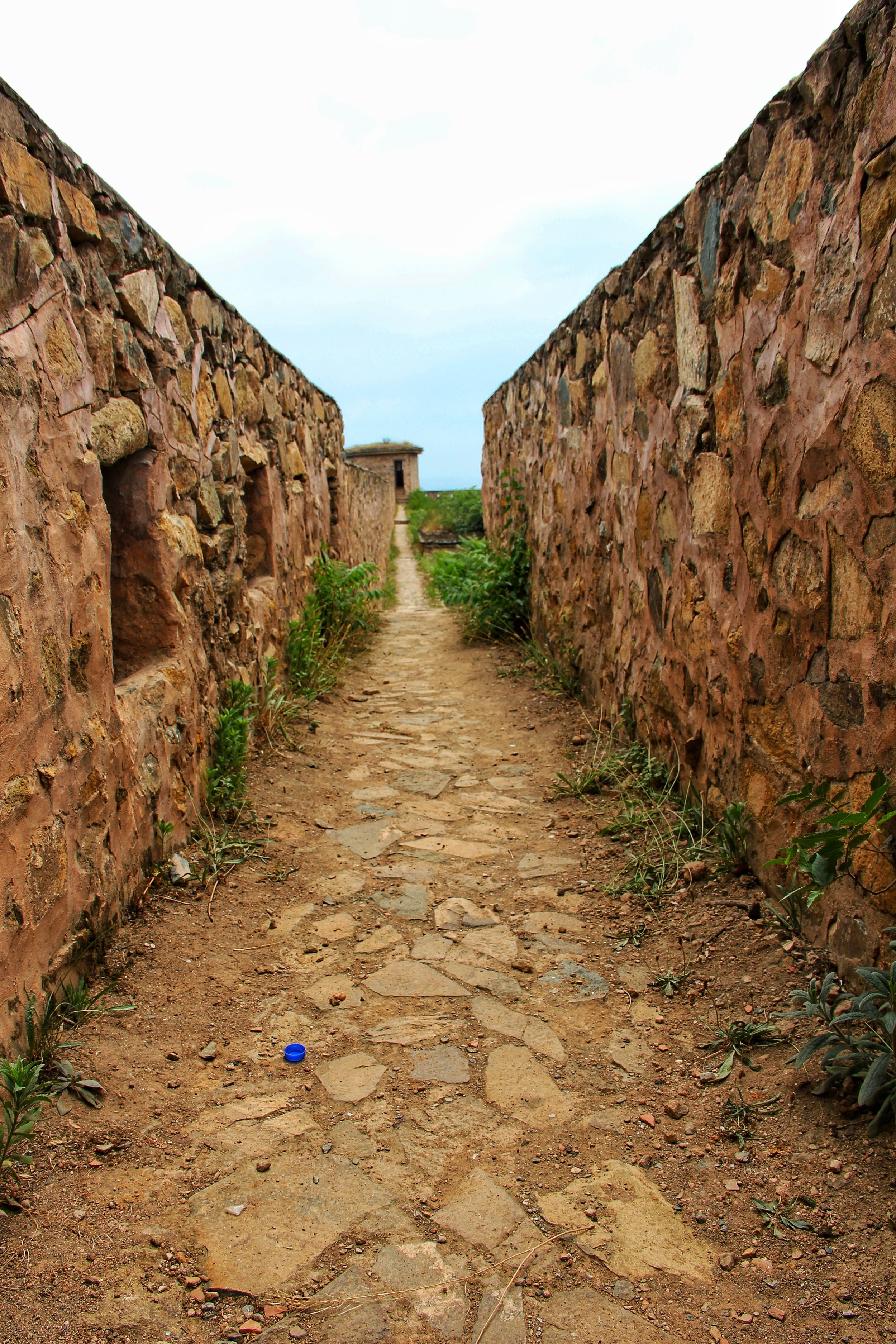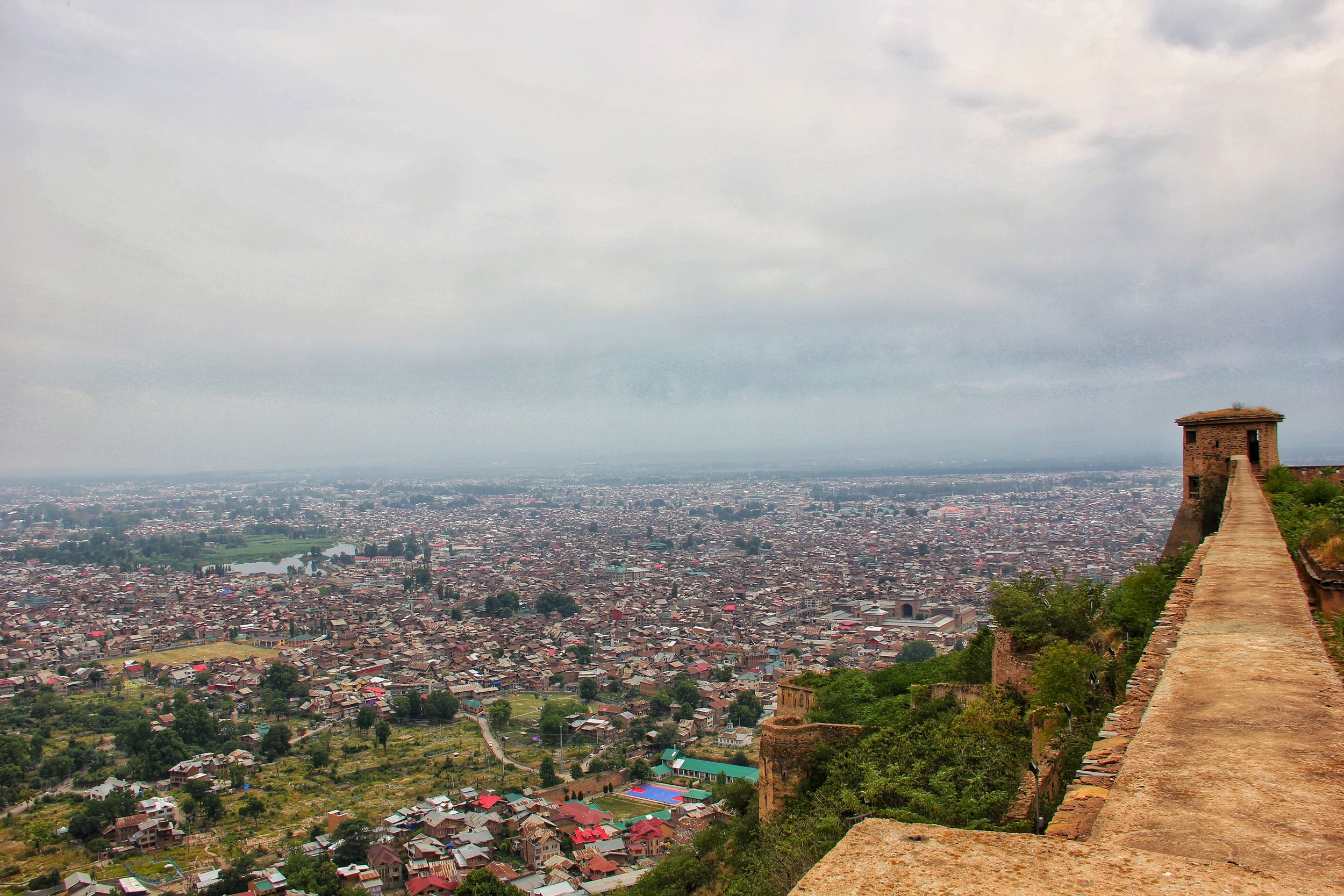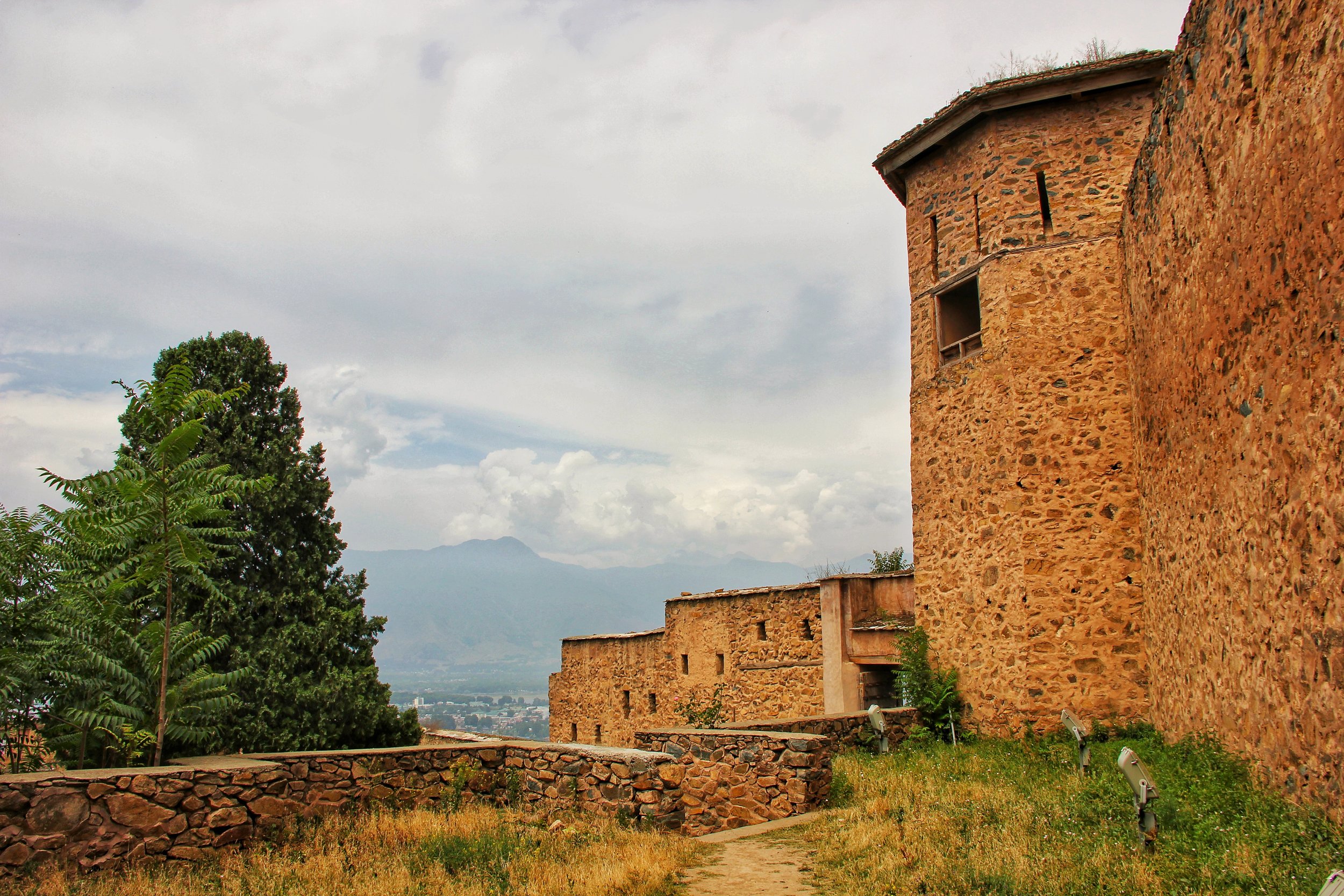The Hari Parbat Fort as seen from the Badamwari below
The imposing Hari Parbat Fort. The present Fort was built by the Durrani Afghans in 1808 though originally the fortifications around the hill were built during the reign of Akbar who wanted to make a new capital here. I did some explorations around the Fort two weeks back and found some interesting things around. The original Fortification wall built by the Mughals still exist in parts around the lower parts of the Hill.
The most fascinating fact was that there was a tunnel from the Fort which led one to the shores of the Pokhribal Lake, an extension of the Nigeen Lake, right from the top of the Fort. The Tunnel entrance is still there at the Pokhribal Lake. Also a ventilation hole around 10 ft is still preserved in the Badamwari Garden. The Tunnel is now blocked so the secret passage way cannot be explored further. The Hill also holds the Shrine of Makhdoom Sahib such encompasses various historical structures of the Mughal Era, as well as the Sharika Devi Temple and the Chatti Padshahi Gurudwara.
The Akhun Mullah Mosque on the Hari Parbat
An alternate view of Srinagar old Town. As seen from above the Mosque of Akhun Mullah Shah near Makhdoom Sahib a little way up from the Kathi Darawaza. This little Mosque was erected by Dara Shikoh in attractive grey limestone to honor his tutor Akhun Mullah Shah. The Mosque was built in 1649 AD and it has a stone lotus over it's pulpit, the only one of its kind in Kashmir. Another little architectural gem of Kashmir. In the background is visible the Shankaracharya Hill with the Shankaracharya Temple, another gem that was made in the 7th century AD.
Massive Chinars overlooking the Srinagar city in the compound of the Akhun Mulla Mosque
The Chatti Padshahi Gurudwara as seen from the Hari Parbat
The Chatti Padshahi Gurudwara, one of the most revered Gurudwaras in the state of Jammu and Kashmir, in Srinagar as seen from the Akhun Mullah Shah Mosque. This Gurudwara is situated in the Rainawari locality near the Kathi Darawaza on the foot of the Hari Parbat. It is associated with the Sixth Guru who is supposed to have roamed around in the Valley spreading the message of Guru Nanak Dev ji.
Pokhribal Lake a part of the Nigeen Lake and the Lepers Colony behind it
The Boat Club at Pokhribal Lake at Srinagar
This pic was taken from the top of the now in ruins outerwall of the Hari Parbat Fort. The water body that you see here is called Pokhribal and it's an extension of the Nigeen Lake. Underneath the massive Chinars is a Shamshan Ghat run by the Ahle Singham, a local Sikh Group. The shed is where they cremate the bodies.
The White building is the Boat Club though there surely wasn't much boating happening and the place looked derelict. Just a few guys using the pier for trying to catch a fish on their improvised fishing rods. The White structure across the Lake is a water treatment plant or something on those lines.
Behind the plant there are old buildings and a big old Hospital. This is Kashmir's Leper Colony. This isolated spot was where all the Lepers in the state were kept. Due to ignorance Lepers were shunned and were forced to live in isolation over here. In time they married amongst themselves and had families. Now three generations of the Lepers families live here. The Lepers are still provided daily / monthly rations. Generally people tend to stay away from this place.
Next time will surely visit the Leper Colony. It's a place time and people forgot. And of course the pic has the Zabarwan, the Lakes, the Chinars and all other things usually associated with Kashmir.
A Family home and its field by the banks of the Pokhribal Lake. On the right you can see the Tunnel which linked the Lake to the Fort on the top of the Hill
An massive old Chinar by the Pokhribal Lake with an ancient structure. Next to the Chinar is a crematorium used by the Sikh families living in this area.
A view of the Nigeen Lake in the foreground and the Dal Lake in the background with the Zabarwan Mountains in the background.
The Jamia Masjid in downtown Srinagar as seen from the Hari Parbat
The Jamia Masjid in the Nowhatta area of Srinagar surrounded by the old part of Srinagar. This beautiful Mosque is one of the largest Mosques in Kashmir and has a capacity of well over 30,000. It was built in 1394 AD by a Sultan of the Shah Miri Dynasty. It is a beautiful piece of Architecture indeed though few outsiders visit this place. This was clicked from the Mosque of Akhun Mullah Shah above the Kathi Darwaza both of which are ASI designated monuments and again are beautiful examples of Islamic Architecture.
The Pir Panjals in the background of Srinagar city as seen from the Akhun Mullah Mosque


